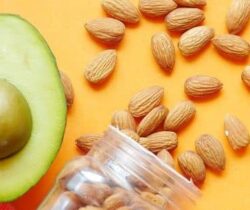What is pre-diabetes?
Pre-diabetes is a condition that can develop when blood glucose levels are:
- Higher than normal
- Not high enough to be diagnosed as type 2 diabetes
(Source: Diabetes Australia)
If you are diagnosed with pre-diabetes, this can increase your risk of developing type 2 diabetes by 10 to 20 times (Source: HealthDirect).
Making lasting changes to your lifestyle; including healthy eating, exercising and managing your weight, can help prevent you from developing type 2 diabetes and its complications.
Are there any symptoms for pre-diabetes?
Pre-diabetes doesn’t have any warning signs. Most people find out they have pre-diabetes when their doctor orders a blood test, which is likely to happen if the doctor decides that the person is at risk of type 2 diabetes.
How is pre-diabetes diagnosed?
If your doctor notices that your blood sugar levels are higher than normal, they may send you for more tests to determine whether you have pre-diabetes.
If pre-diabetes is confirmed, you have either one or both of these conditions:
- Impaired glucose tolerance — your blood glucose level is above normal but not high enough to be called diabetes; and
- Impaired fasting glucose — your fasting blood glucose level is above normal but not high enough to be diagnosed as diabetes.
To confirm if you have pre-diabetes or diabetes, your doctor will do a fasting blood glucose test that measures your blood glucose levels after a period of fasting and confirms whether or not your blood glucose levels are higher than normal.
Your doctor may also ask you to do an Oral Glucose Tolerance Test (OGTT) to measure your body’s response to sugar (glucose). You will need to fast (not eat for 8 hours) and then drink a sugary drink. A blood test is taken at 0 hours at fasting, then 1 and 2 hours later to measure your blood glucose levels. (Source: HealthDirect)
Who is at risk of developing pre-diabetes?
Pre-diabetes shares the same risk factors as type 2 diabetes, which means that a person is at a higher risk of developing pre-diabetes if they:
- Have a family history of type 2 diabetes;
- Are overweight;
- Have a larger waist measurement;
- in Caucasian men – greater than 94 cm
- in Asian men – greater than 90 cm
- in women – greater than 80 cm
- Engage in a low level of physical activity;
- Smoke;
- Have high blood pressure and/or high cholesterol (blood fats);
- Have been diagnosed with gestational diabetes (diabetes during pregnancy);
- Have polycystic ovary syndrome; and
- Are taking some antipsychotic medications.
(Source: BetterHealth)
What should I do if I am diagnosed with pre-diabetes?
If you are diagnosed with pre-diabetes, it is important that you manage it by making changes to your daily habits to live a healthier life. This includes eating a healthy diet, regular physical activity and, if necessary, losing weight.
If you are diagnosed with pre-diabetes, that does not necessarily mean you’ll develop type 2 diabetes. 1 in 3 people with pre-diabetes will develop type 2 diabetes (Source: HealthDirect). Eating well and exercise can prevent this in more than half of high-risk cases.
As pre-diabetes also increases the risk of heart disease, it is important to control your blood pressure, cholesterol and triglyceride levels and to quit smoking. Additionally, you will need to have an annual health check, including a screening for type 2 diabetes.
(Source: Diabetes Australia)
There are many ways to manage your health after being told you have pre-diabetes including;
Physical Activity
Aim for at least 30 minutes of moderate intensity exercise each day of the week. This
could be:
- Shorter sessions: 10 minutes, 3 times per day; and
- Longer sessions: 30 minutes (or more)/day, every day of the week.
Don’t Smoke
It is very important for people with pre-diabetes to stop smoking. This is because
you are at high risk of heart disease, and smoking further increases that risk.
If you are considering quitting smoking, we recommend you contact one of these
programs for extra support:
- Call Quitline on 131 848 or visit the Quitline website – https://www.quit.org.au/
- Talk to your doctor or chemist about additional options
Healthy Eating
In order to manage pre-diabetes, it is important to have a nutritious diet that includes:
- Enjoying a wide variety of foods with a range of colours;
- Eating plenty of wholegrain cereals, vegetables, legumes and fruits;
- Including low-fat milks, yoghurts, cheeses and/or diary alternatives;
- Including lean meat, fish, poultry and/or meat alternatives;
- Eating regular meals throughout the day. Irregular meals can lead to overeating at a single meal, or snacking on inappropriate foods;
- Limiting added sugar, honey, syrup and foods that are high in these ingredients e.g. soft drink;
- Limiting highly refined and fatty foods (e.g. chocolates, cakes, biscuits, fried foods or foods with pastry);
- Not adding salt to cooking or at the table; and
- Limiting alcohol intake.
Stress Management
High stress levels can contribute to raised blood glucose levels and increase your risk of progressing to type 2 diabetes.
There are many ways that we can reduce daily stress in our lives, such as:
- Regular exercise – You should do some form of exercise that causes you to feel puffed afterwards – a leisurely stroll to the bus stop is not enough! Have at least 20 minutes of exercise three times a week
- Avoiding situations that make you feel stressed such as unnecessary arguments and conflict.
- Giving yourself some time to relax each day, as well as trying to spend time with people who make you feel good about yourself
- Eating well, as a nutritious diet is important. Eat plenty of fresh fruit and vegetables and avoid sweet and fatty foods
- Having a good sleep schedule. If you have difficulty falling asleep, do something calm and relaxing before you go to bed like listening to music or reading
- Making time to have some fun and to get a balance in your life.
To deal with stress more effectively, it helps to investigate your stresses and how you react to them. Try to:
- Understand what situations make you feel stressed
- Understand what situations you can and can’t control
- Prepare for stressful events in advance, by thinking about the future
- Keep yourself healthy with good nutrition, exercise and regular relaxation
- Do things that make you happy every day.
Why should I manage my pre-diabetes?
Taking the steps to manage pre-diabetes is the best way to prevent conditions such as type 2 diabetes and cardiovascular disease (CVD).
What are the symptoms of type 2 diabetes?
Type 2 diabetes is a condition in which cells within the body have a resistance to insulin and/or the body isn’t making enough insulin to meet the needs of the person to keep blood glucose levels in range. The symptoms of type 2 diabetes are:
- Regular thirst
- Exhaustion
- Constant hunger
- Frequent urination
- Infections, such as urinary tract or thrush
- Skin rashes and/or itching
- Headaches
- Blurred vision and
- Slow healing wounds.
What are the complications associated with cardiovascular disease?
CVD includes a number of conditions that involve narrowed or blocked blood vessels that can lead to complications, such as;
- Coronary heart disease
- Heart attack
- Heart failure
- Stroke
- Arrhythmias – abnormal heart beats
- Aneurysm – a bulge caused by weakening of the heart muscle or artery
- Septal defect – an abnormal opening between the left and right sides of the heart
- Peripheral vascular disease – a disease of the large blood vessels of the arms, legs, and feet
- Rheumatic heart disease – caused by rheumatic fever, and mainly affecting the heart valves and
- Congenital heart disease – defects or malformations in the heart or blood vessels that occur before birth.
How does the Life! program help me manage pre-diabetes and avoid type 2 diabetes and cardiovascular disease?
With the Life! program’s easy 2-minute health check, you can check risk factors for conditions such as pre-diabetes. With the results, you can take those first important steps towards improving your overall health and lowering your risk for pre-diabetes and/or type 2 diabetes.
The Life! program is a free healthy lifestyle program that helps you improve your eating habits, increase your physical activity and manage stress. You can choose from a group course or the telephone health coaching service.
Our experienced health professionals will help you make small changes to your lifestyle so that you can achieve your health goals and reduce your risk of type 2 diabetes and cardiovascular disease.
Life! is funded by the Victorian government and managed by Diabetes Victoria. You can check your eligibility for the program here.
Sources
https://www.diabetesaustralia.com.au/about-diabetes/pre-diabetes/
https://www.healthdirect.gov.au/pre-diabetes
https://www.betterhealth.vic.gov.au/health/conditionsandtreatments/diabetes-pre-diabetes
https://health.act.gov.au/sites/default/files/2018-09/IGT%20Pre-diabetes%20booklet.pdf
https://www.betterhealth.vic.gov.au/health/healthyliving/stress#stress-management
Reviewers:
Elleni Kaias, Accredited Practicing Dietitian | Primary Care Engagement Lead
Kristie Cocotis, Head of Prevention and Health Promotion
Sarah Dubé, Strategy and Engagement Lead
Ria Cheripuram, Digital Communications Officer
Tegan Kohlman, Communications and Social Marketing Officer





